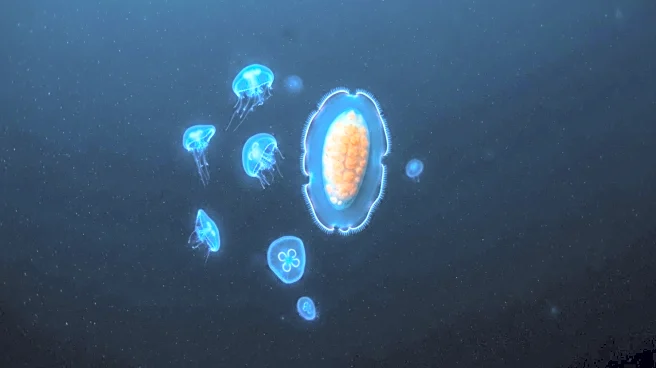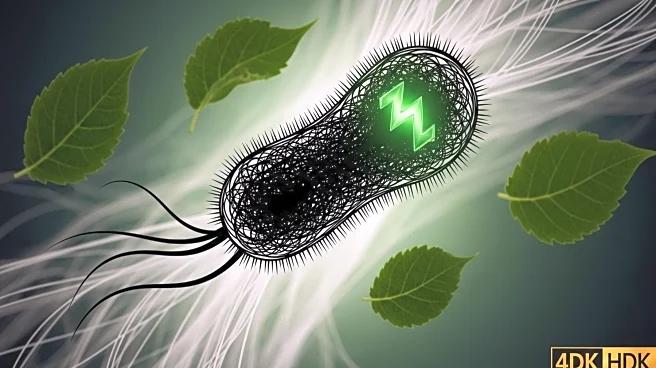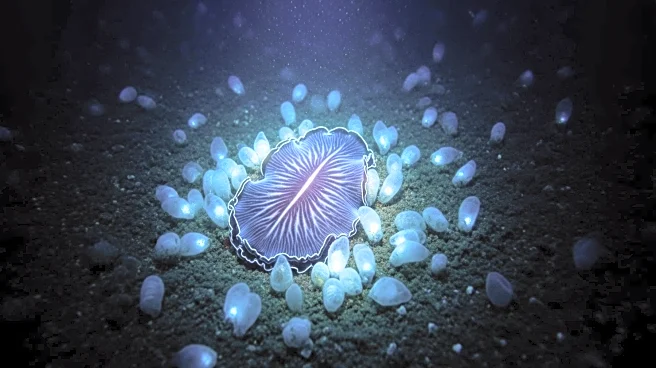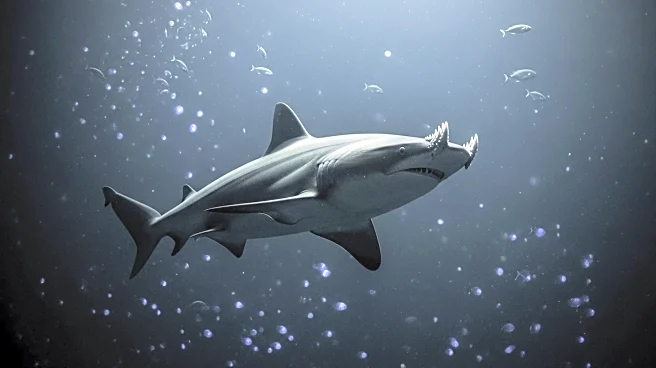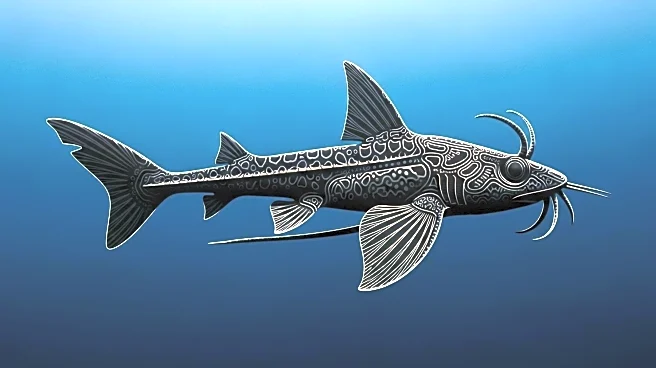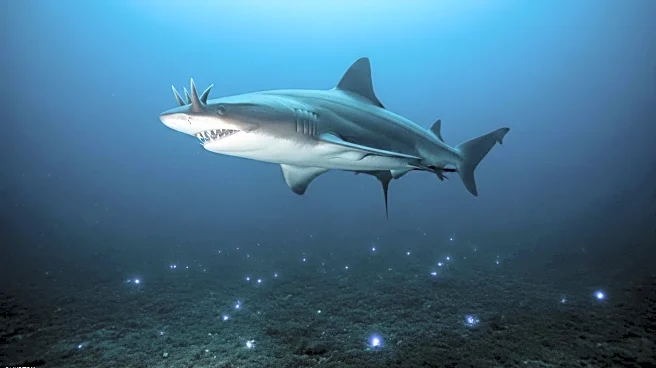What is the story about?
What's Happening?
A team of researchers has discovered jet-black spheres on the Pacific seafloor at a depth of approximately 20,300 feet. Initially mistaken for fish eggs, these spheres are actually cocoons containing developing flatworms. The discovery was made near the Kuril-Kamchatka Trench in the northwestern Pacific, a region known for its extreme depths. The cocoons, measuring about 0.12 inches across, were collected using a remotely operated vehicle. Genetic tests revealed that the embryos belong to the Tricladida order of free-living flatworms, typically found in coastal tide pools. This marks the deepest record for free-living flatworms and provides new insights into their early life stages.
Why It's Important?
The discovery of these flatworm cocoons at such depths expands scientific understanding of life in the hadal zone, one of the least explored areas on Earth. It challenges previous assumptions about the distribution and life cycles of free-living flatworms, suggesting a possible migration from shallow seas to deep ocean trenches. This finding could have implications for future deep-sea research, offering new anchor points for genetic comparisons and submersible work. Understanding how these organisms survive in extreme conditions may also provide insights into their physiology and ecological strategies.
What's Next?
The study opens avenues for further exploration of the Kuril-Kamchatka region and other deep-sea environments. Researchers may focus on collecting more intact specimens to better understand the life cycles and reproductive strategies of flatworms at such depths. Future surveys could also aim to identify other species inhabiting these extreme environments, potentially leading to new discoveries in marine biology and ecology.
Beyond the Headlines
The ability of flatworms to regenerate when injured makes them valuable for studying body plan assembly and repair under stress. This trait could be crucial for understanding how organisms adapt to the high-pressure, low-temperature conditions of the deep ocean. The discovery also highlights the importance of preserving fragile ecosystems and the need for careful sampling techniques to avoid damaging delicate marine life.
AI Generated Content
Do you find this article useful?
